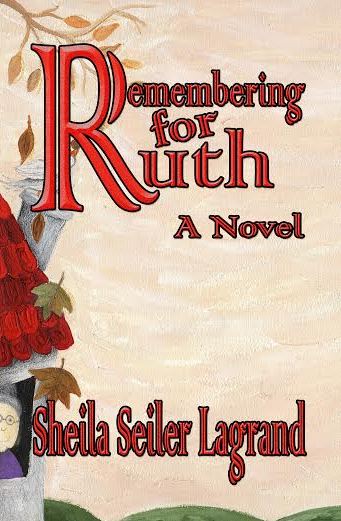 Learn more on Amazon.com: Remembering for Ruth: A Novel
Learn more on Amazon.com: Remembering for Ruth: A Novel
About The Book
Remembering for Ruth is a story about Alzheimer’s disease, and about caregiving, and about adoption reconciliation, and about families loving through the hard. Which means, of course, that mostly it’s about God.
What isn’t?
I wrote a preface for the book, just like grown-up writers do. Here it is:
Two questions beg attention at the beginning of a book. I always want to know how did this author come to write a book? And then I ask myself out of the infinite human imaginings why did this author write this book? Since I reckon that most people wonder about the same things I do, I will tell you.
I came to write a book because in the summer of 2013, my friend and mentor Kathi Macias invited me to contribute a novella-length story to her collection, Kathi Macias’ Twelve Days of Christmas. I said, “Sure! Why not?” and then immediately wondered why on earth I had committed to the project. I wrote the story, Yankee Doodle Christmas, submitted it, and congratulated myself for behaving like a grown-up. After its publication, while I was visiting our daughter, son-in-law, and grandlittles in Guam for the holidays, the publisher of Kathi’s project invited me continue the characters and their story. In a fit of delirium due to the tropical heat, I said, “Sure! Why not?”
And here we are.
I came to write this book because I want you to remember that even in times of great sadness and exhausting family challenges, you will stumble upon little nuggets of joy if you permit yourself to see them. Please don’t misunderstand. I despise dementia and I would love to see a day when it’s relegated to history. But until then, if I can share a story to encourage others who are walking that long, treacherous path, then I’m duty-bound to share.
This motivation is drawn from two life events. In 1980, my grandfather, Charles Seiler, died after a brief illness. He’d been blessed with a thirty-year retirement following his career as an officer in the Marine Corps. Friends of the family were concentrated in San Diego, where they lived, and in California’s central valley, where my grandmother had grown up. We held a memorial service in San Diego, then shipped him to Stockton, where another memorial service accompanied his burial. It was a long, difficult stretch of mourning between the moment of his death and the day we laid him to rest. Following the funeral, my husband of five months and I spent a few days visiting with my family in Lodi. When I returned to work after this trip, a coworker inquired after our trip and when I mentioned that we’d toured the area with my cousin and her husband, she glared at me and said, “It sounds more like you were on vacation than at a funeral!” Since I was only twenty-one and had limited experience with death and grieving, I accepted the shame she served me.
After my grandpa died, my grandmother, Alice Marie Craig Seiler, developed Alzheimer’s disease. Witnessing her decline stung my heart; I can’t imagine how much harder it must have been for my father. Surely, I thought, this is one long, tortuous trip down a trail of unmitigated suffering for all of us.
I was wrong. The day came when she couldn’t be with me in 1989, but I could return with her to Guam in 1934, where my father was born. She chattered about the household help they employed and my grandfather’s puttering in the yard and the entertainments they would dream up during their years on that small island. These visits were gifts—to this day I treasure those memories.
If you are hiking the dementia trail with a loved one, I beg you to do two things: Keep an eye out for the treasures. And don’t let anyone serve you shame when you rejoice.




Recent Comments